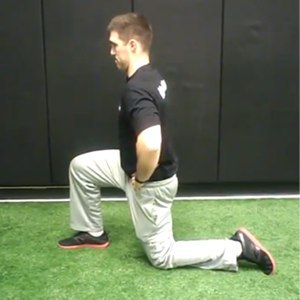How to Cool Down After a Tough Training Session
Every footballer knows the benefits of a thorough warm-up before a training session – and the consequences of not performing one. However, cool-down sessions are not so widely adopted at grassroots level, yet they can deliver a range of long-lasting benefits if performed properly.
Instead of trundling off to your car or the changing room immediately after a training session, completing a ritual of stretching and low intensity aerobic activity could leave you better prepared for the next big match. The twenty minutes immediately after strenuous activity is the best time to perform this ritual, as it helps the body’s natural recovery process. Cooling down properly is especially important if you have another training session or match within 24 hours, so it’s important that it becomes an integral part of your post-exercise rituals.
What are the benefits of cool-down sessions?
After an extended period of physical exertion, your body needs time to recover. By completing a series of stretches and gentle aerobic activity, you can give Mother Nature a helping hand and enjoy some significant benefits:
- Increased and prolonged muscle relaxation
- Decreased risk of injury during the next session
- Reduced fatigue
- Improved flexibility
Aerobic cool-down
If your muscles feel heavy and lethargic after a strenuous training session, the chances are you haven’t cooled down properly. Although jogging will likely be the last thing you want to do, a 10-minute jog will stop the blood from gathering in your legs, and this should speed up the removal of lactic acid from your muscles. While lactate is necessary during the heights of physical exertion, its presence can actually lead to increased fatigue during periods of inactivity. A little gentle jogging at the end of a training session will get the blood flowing, which should encourage the flow of lactate away from your muscles.
Stretching
It’s important to understand which muscles are used most often during a training session. A good coach will know exactly which muscles have been used depending on the drills and exercises you have been taking part in. The likelihood is that you will need to perform a series of stretches aimed at your calves, thighs, hamstrings, hip flexors, gluteals and groin. During extended periods of exercise, these muscles will become shortened – a state that can lead to serious injury during subsequent physical activity. Unless you stretch these muscles after every match or training session, you run the risk of serious pulls and tears.
Hamstrings and calves: Sit on the ground, tuck one leg in and extend the other out in front of you. Keeping your back as straight as possible, reach for the toes of your extended foot - pointing your toes towards yourself at the same time. You may also want to grab the top of your foot and pull it towards you whilst your leg is fully extended. This should be repeated with the other leg.
Hip flexor: Get on one knee and put your hands on your hips. Make a very subtle lunge forward using your glutes. The amount of movement needed is no more than a couple of inches, but remember not to lean into the stretch. Repeat the exercise on the other knee.
Groin: Sit on the ground and put the soles of both feet together so your knees are stretched out either side of you. Whilst keeping your back straight, try to touch the ground with both knees at the same time.
Quads: Balance on one foot and pull the other foot as close to your buttock as possible. You can use a wall or a teammate for balance if required.
Glutes: Lie on your back and tuck your knee into your chest by pulling your knee in.
According to an article in the Telegraph, some experts are now claiming that stretching before exercise could actually be counter-productive. An increasing number of physiotherapists and fitness coaches are placing a greater emphasis on cool-downs than warm-ups, so perhaps it’s time you implemented a routine of aerobic exercise and stretches after your coaching sessions and matches!


